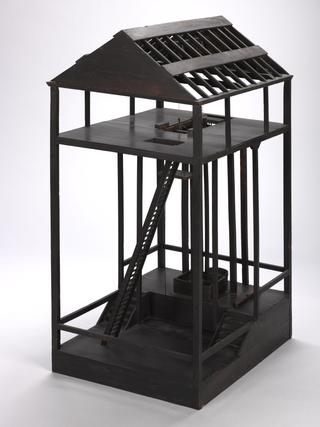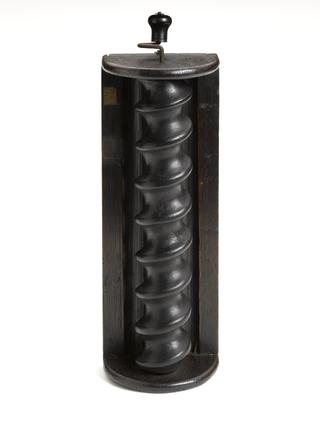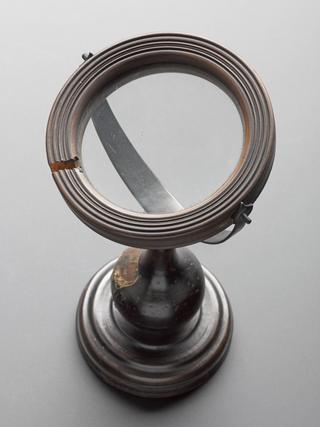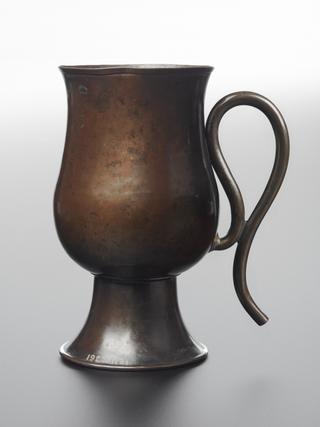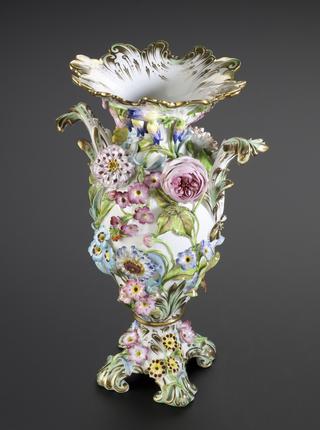
Leyden jar, early 19th century.
- Made:
- 1800-1850


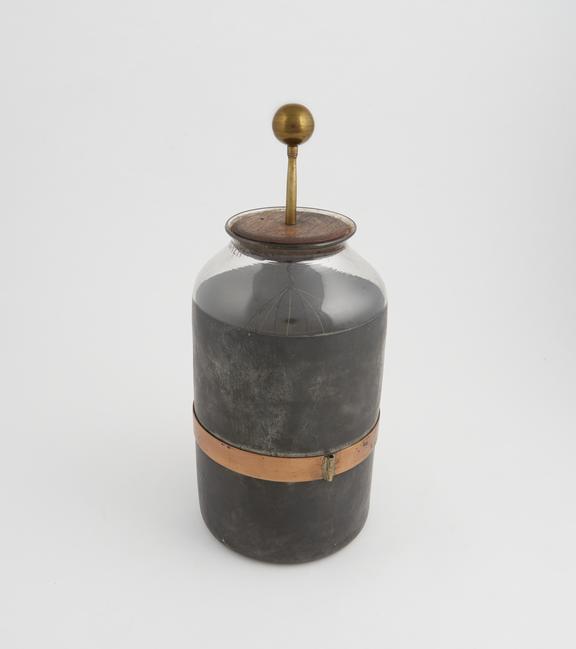

Leyden jar, early 19th century. Leyden jars were invented by Petrus van Musschenbroek in 1745. They are devices for storing static electricity, and consist of two conductors separated by an insulator. This Leyden jar has a tinfoil coating both internally and externally. There is a brass ball conductor on a brass rod which extends through the mahogany lid and joins eight wires which are twisted together to form a cage.
Details
- Category:
- King George III
- Object Number:
- 1927-1271
- copyright:
- Unlinked Name
- credit:
- King's College, London
